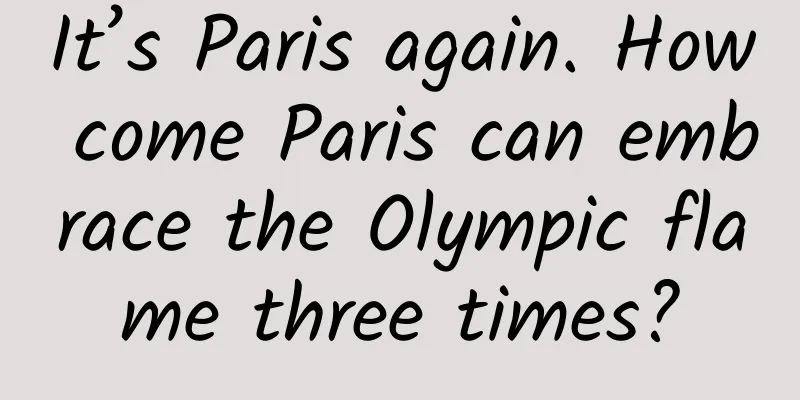Popular Science | The Birth of Algebraic Topology

|
The new mathematical objects (matrices, algebras, groups, clusters, etc.) discovered by algebraists in the 19th century began to be used by mathematicians in their research work. They used these new mathematical objects as tools to solve problems in other mathematical fields such as geometry, topology, number theory and function theory. The French mathematician Poincare first algebraized the ideas of topology and became the founder of algebraic topology. His successor Brouwer was a very thoughtful philosopher - the founder of intuitionism. By John Derbyshire Translation | Zhang Hao Topology is often called "rubber geometry." Imagine a two-dimensional surface, such as a sphere, made of some stretchable material. This rubber sphere can be transformed into any other surface that is "the same" as the sphere by stretching or squeezing it, and this is what topologists are concerned with. To make topology mathematically precise, you need to have some more rules, such as cutting, gluing, "squashing" a finite area into a point with no dimensions, or allowing the rubber surface to pass through itself like fog, and these rules vary slightly in different applications. But here, this broad and familiar definition will suffice. Until the late 19th century, topology showed little relation to algebra. In fact, its early development was very slow. The word “topology” was first used in the 1840s by the Göttingen mathematician Johann Listing (1808–1882). Listing seemed to have derived many of his ideas from Gauss, with whom he was closely associated. However, Gauss never published anything related to topology. In 1861, Listing described a one-sided surface that we now call a Möbius strip (Figure 1); Möbius also wrote about this surface four years later, and for some reason it was his introduction that attracted the attention of mathematicians. Although it is too late to justify the name now, I will label Figure 14-1 the Listing strip to do Listing a little justice. Figure 1 Listin belt In addition, if a small disc is cut off from a folded sphere (Figure 2), the remaining part is topologically equivalent to the Listing strip. The fact that two objects are "same" (i.e., topologically equivalent) under appropriate stretching and squeezing can be expressed in a prettier and more fashionable term: homeomorphism. However, there is a lot to say about it, so for the sake of simplicity, I will continue to use the term "topological equivalence." Figure 2 Projective plane in the topological sense Another factor that contributed to the development of topological thought was Riemann's use of complex self-intersecting surfaces in his 1851 doctoral thesis to help understand functions. After carefully studying these Riemann surfaces, Jordan came up with the idea of studying them - looking at closed paths embedded in them and seeing what happens. I use "surface" instead of "space" here to make it more intuitive. For example, imagine a sphere. Take a point on the sphere and walk in a circle from that point until you get back to the starting point. Without doing anything non-topological with the path you just walked, and without leaving the surface, can it shrink all the way back to the starting point? Can it shrink smoothly and continuously ? Yes, it can. Any path on the sphere can do this. This is not true for a torus. Neither path a or path b depicted in Figure 3 can be contracted to point P, but path c can. So perhaps studying these paths does teach us something about the topology of the surface. Figure 3 Closed circuit on a torus Can the closed-circuit people form a group? In 1895, a brilliant French mathematician, Henri Poincaré (1854-1912) of the École Polytechnique in Paris, formulated these ideas algebraically. Poincaré stated it this way: Consider all possible Jordan closures on a surface, that is, all paths that have the same starting and ending points. Keeping this base point fixed, divide all closed paths into families of sets, such that two closed paths belong to the same family if one can be smoothly transformed into the other, i.e., they are topologically equivalent. Consider these families, no matter how many there are. The composition of two families is defined as first a path through the first family, then a path through the second family (it does not matter which path you choose). Now you have a set of closed circuit families, and a way to combine two elements into another element. Can these elements (the closed circuit family) form a group? Poincare showed that it is indeed a group, and algebraic topology was born. You need one more small step to get to the concept of a fundamental group for any surface - you need to get rid of the dependence of your closures on any particular base point (in fact, they don't have to be the exact Jordan closures I defined). The elements of this group are families of paths on the surface, and the rule for composing two families of paths is as follows: first a path from the first family, then a path from the second family. The fundamental group of the sphere is actually a trivial group with only one element. Every closed path can be smoothly contracted to this base point, so there is only one family of paths. I mentioned that the fundamental group of the sphere is a trivial group with only one element. But this fact itself is not trivial. It turns out that any two-dimensional surface whose fundamental group is a trivial group with only one element must be topologically equivalent to a sphere. Now, the familiar two-dimensional sphere embedded in ordinary three-dimensional space has analogs in higher dimensions. For example, a curved three-dimensional space that is "just like" a sphere but in four dimensions is sometimes called a hypersphere. It's also sometimes called a three-dimensional sphere. Yet it's hard to wrap your head around this term, at least for nonmathematicians. Does "three-dimensional sphere" mean the two-dimensional surface of an ordinary sphere curved in three dimensions? Or does it mean the three-dimensional surface of a hypersphere curved in four dimensions? To mathematicians, three-dimensional sphere means the latter, because Riemann told us to think about a manifold from its interior. But nonmathematicians usually think of two-dimensional surfaces in three dimensions, so the former makes some sense. The question is: In four-dimensional space, is any three-dimensional curved space with the trivial group as its fundamental group also topologically equivalent to this hypersphere? In 1904, Poincaré proposed the famous Poincaré conjecture, asserting that the answer to the above question is yes. As of late 2005, the conjecture had neither been proved nor disproven. In a series of papers published in 2002 and 2003, the Russian mathematician Grigory Perelman (1966-) proved it to be correct. As I write this book (which was published in May 2006), mathematicians are still reviewing Perelman's work. Based on informal reports of these review reports, there is a growing consensus that Perelman has in fact proved the conjecture. The Poincaré conjecture is one of the seven Millennium Prize problems, and solving any of them will win a $1 million prize from the Clay Mathematics Institute in Cambridge, Massachusetts, USA. When a mathematical theory begins to generate conjectures, it begins to live. Topology came alive with the publication of Poincare's book "Analysis of Position" in 1895. In the first few decades of its development, topology was often called "position analysis". It was not until the 1930s that the name "topology" was generally used to refer to the subject. I think Solomon Lefschetz (1884-1972) should be thanked for this. The “contradiction” of mathematical thought It's a bit strange that Poincaré became the founder of modern topology. Mathematicians believe that there are actually two flavors of topology: one that is inspired by geometry, and one that is inspired by analysis. By "analysis" I mean analysis in the mathematical sense, that is, the branch of mathematics that studies functions, limits, differentials, and integrals, all of which are related to continuity. If you look back at the many times I mentioned smooth and continuous deformations, you will understand this connection in the topological sense. In a sense, topology would not make sense without the basic concepts of smoothness, continuity, and infinitesimal movements from one position to another, that is, some analytical way of thinking. In mathematical terms, the opposite of analysis is combinatorics. In combinatorics, we study things that can be counted: 1, 2, 3, and so on, with no other numbers between them. Since there are no integers between them, there is no smooth path from one integer to another; we need to jump over gaps. While analytical math is continuous, moving smoothly through continuous space, combinatorics is discontinuous, jumping straight from one integer to another. Today, topology should be the most coherent of all mathematical studies, since rubber surfaces bend and stretch smoothly and continuously. Yet the earliest known topological invariant was an integer for the number of holes, a measure of the number of circular holes in a surface, discovered in 1813 by the Swiss mathematician Simon l'Huilier (1750-1840). Dimension, another topological invariant (in the topological sense that you can't turn a shoelace into a pancake or a pancake into a brick), is also an integer. Even the fundamental groups discovered by Poincare are not continuous groups like Lie groups, but countable discrete groups. Although these groups may be infinite, their elements can be counted: 1, 2, 3, and so on. The elements of a continuous group are uncountable. So everything interesting in topology seems to be discrete, not continuous. Paradoxically, Poincaré came to topology via analysis, or rather, while working on some problems in differential equations. However, his results and all his ideas in Positional Analysis were combinatorial. The study of topology from an analytical point of view (now usually called point-set topology) had little appeal to him. The same contradiction is even more obvious in the case of the Dutch mathematician Brouwer (1881-1966), who is the most important algebraic topology successor of Poincaré. It was Brouwer who proved in 1910 that dimension is a topological invariant. In modern mathematics, his fixed point theorem is more important. Brouwer's fixed point theorem Any continuous mapping of an n-dimensional sphere onto itself has a fixed point. The n-sphere is a generalization of the concept of a solid unit disk (the set of points on a plane that are no more than one unit from the origin) or a solid unit sphere (the set of points in three-dimensional space that are no more than one unit from the origin) to n-dimensional space. For the two-dimensional plane, this theorem means that if you move every point on the unit disk smoothly to some other point, and move very close points to equally close points, then there will always be one point that remains in the same position. There are many consequences of the fixed point theorem and its direct generalizations. For example, if you carefully and steadily stir the coffee in the cup, a drop of coffee, or a molecule, will eventually come to rest at its starting position. (Note that in a topological sense, the coffee in the cup is a three-dimensional sphere, and by stirring, you have moved each molecule in the coffee from some point X to some point Y on this three-dimensional sphere. This is what we mean by "mapping a space onto itself.") Another less obvious example: Lay a piece of paper on a table and draw its outline on the table with a marker. Now crumple the paper, but don't tear it, and put it into the outline you drew. There must be (at least) one point on the crumpled paper that is directly above this point in the outline of the drawn paper. Figure 4 Brouwer | Image source: MacTutor Intuitionism The underlying paradox of Brouwer's topology is that the results he obtained were at odds with his philosophy. This might not be important to an ordinary mathematician, but Brouwer was a very philosophical mathematician. He was obsessed with metaphysical ideas (or more precisely, anti- metaphysical ideas) and the search for a sound philosophical foundation for mathematics. To this end, he founded the doctrine of intuitionism , which sought to root all mathematics in the human mind's activity of continuous thinking. A mathematical statement, Brouwer said, is not true because it corresponds to some Platonic higher entity that is beyond our physical senses but that our brains can somehow understand. It is also not true because it follows some rules of linguistic symbols, as logicians and formalists of Brouwer's time (such as Russell and Hilbert) had argued. It is true because we can experience its correctness step by step through some appropriate mental constructions. According to Brouwer, the material that makes up mathematics (very roughly) is not taken from some warehouse in the world beyond our perception, nor is it just language or symbols on paper that operate according to rules. It is a kind of thought - a human activity that is ultimately based on our intuition of time and is part of human instinct. This is only the simplest summary of Intuitionism, which has spawned a vast literature. Readers familiar with this philosophy will recognize the influence of Kant and Nietzsche. In fact, anyway, Brouwer was by no means the only pioneer of this line of thought. Similar ideas run through the modern history of mathematics, dating back to before Kant, at least to the time of Descartes. I think Hamilton, the discoverer of quaternions, can be regarded as an intuitionist. In 1835, in his paper "Algebra as a Pure Science of Time", he tried to establish Kant's mathematical ideas based on geometry on "intuition" and "construction" and introduce them into algebra. In the late 19th century, Leopold Kronecker (1823-1891) strongly opposed Georg Cantor (1845-1918)'s introduction of "real infinity" into set theory. You could call Kronecker a pre -intuitionist. Kronecker believed that uncountable sets like these did not belong in mathematics, that mathematics could develop without them, and that they brought useless and unnecessary metaphysical baggage to mathematics, which should be rooted in counting, algorithms, and calculations. It was this school of thought that Brouwer carried into the 20th century and spread to later mathematicians, such as the American mathematician Errett Bishop (1928-1983). Brouwer's doctrine is called "intuitionism" and Bishop's doctrine is called "constructivism". These ideas are now all called "constructivism", and their advocate in the United States is Professor Harold M. Edwards (1936-) of the Courant Institute of Mathematical Sciences in the United States. Professor Edwards explained this approach very well in his 2004 book "Essays in Constructive Mathematics" (in fact, so do his other works). Professor Edwards argues that, with the availability of powerful computers, constructivism has now come of age and that many of the mathematical results achieved since 1880 will seem to be misunderstandings once people have made the appropriate adjustments to their thinking. I am not qualified to judge this prediction, but for its own sake I personally find the constructivist approach very attractive. In short, in the years when Brouwer was about 30 years old, his research in algebraic topology must have conflicted with his philosophical views. Ten years later, his compatriot Van der Waerden came to Amsterdam, the Netherlands to study with him. Van der Waerden said in an interview with the Notices of the American Mathematical Society: Although Brouwer's most important research contributions were in the field of topology, he never taught a course in topology and always only taught basic courses in intuitionism. He seemed to no longer believe in his own results in topology because they were incorrect from an intuitionistic point of view. According to his own philosophy, he believed that everything that had been done before - even his greatest results - were wrong. He was a very strange person who was madly in love with his own philosophy. About the Author John Derbyshire , born in the UK, is an American systems analyst, writer and critic who has studied mathematics and linguistics. He was a columnist for the National Review in the United States. His writing covers a wide range of topics, including Love of Prime Numbers and Dreaming of Coolidge. This article is authorized to be excerpted from Chapter 14 "Algebra is Everywhere" of "The History of Algebra: Humanity's Relentless Pursuit of the Unknown" (People's Posts and Telecommunications Press·Turing New Knowledge, 2021.4), and the subheadings are added by the editor. Special Tips 1. Go to the "Featured Column" at the bottom of the menu of the "Fanpu" WeChat public account to read a series of popular science articles on different topics. 2. Fanpu provides a function to search articles by month. Follow the official account and reply with the four-digit year + month, such as "1903", to get the article index for March 2019, and so on. Copyright statement: Personal forwarding is welcome. Any form of media or organization is not allowed to reprint or excerpt without authorization. For reprint authorization, please contact the backstage of the "Fanpu" WeChat public account. |
<<: Entering the active stage! Once infected, it is likely to be life-threatening
Recommend
Weibo released its 2019 annual financial report, with annual financial revenue reaching 12.24 billion yuan
Recently, Weibo released its full-year and fourth...
Hurun Research Institute: There will be 3,442 billionaires in the world by 2025; Huang Renxun's wealth in the AI field exceeds $100 billion
The Hurun Global Rich List was recently released,...
Techniques and strategies for Weibo promotion and traffic generation
Weibo is a platform with huge traffic, with two s...
There are two ages most prone to "cliff-like aging". These habits that accelerate aging should be changed.
People usually do not age at a uniform rate, and ...
Keep user operation system
In the past two years, because of the epidemic, e...
U.S. senators call for U.S. to reject Oracle's deal with TikTok
[[342139]] This article is reproduced from Leipho...
How can you measure the degree of myopia by just writing a word? Why do eyes become myopic?
Are you nearsighted? Do you know how nearsighted ...
Douyin operation methodology: 500,000 followers increased in 2 months!
Before the Spring Festival, I shared my experienc...
How can educational institutions integrate private domain traffic operations into their business?
The concept of private domain traffic emerged in ...
Will the mobile phone manufacturers’ launch of customized VR glasses be a hit?
Recently, there have been reports that Apple has ...
Mobile APP and game promotion, why can’t we achieve significant results even though we have a budget?
Many people may not understand that in operations...
The super moon will appear! Come and see it tomorrow night
Poster production: Feng Juan According to astrono...
AARRR model, analyzing NetEase Wugou Reading!
1. Product Background 1. Product Introduction Net...
Tesla Supercharger stations are no longer free, and will become paid
Recently, Tesla announced an adjustment to the op...
36 Strategies of Sales Closing eBook
36 Strategies of Sales Closing eBook The first se...









